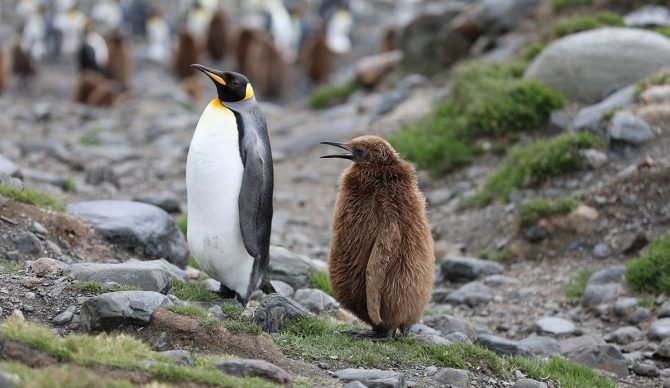
Things are looking bleak for Emperor penguins, one of the most iconic creatures of Antarctica. Photo: Martin Wettstein/Unsplash
Antarctica is losing its ice, and it’s losing it fast. Researchers have been watching it disappear for years, sounding alarm after alarm after alarm, but so far, those alarms have fallen on mostly deaf ears. That ice is extraordinarily important for a whole lot of things, and one of those things is emperor penguin colonies. And in 2022, that sea ice loss led to the complete failure of four out of the five known emperor penguin breeding colonies.
According to a study published in the journal Nature, “Of the five breeding sites in the region all but one experienced total breeding failure after sea ice break-up before the start of the fledging period of the 2022 breeding season.”
At the start of December, researchers noticed that things were looking very grim, especially in the central and eastern Bellingshausen Sea region, which is to the west of of the Antarctic Peninsula. The previous month had seen some areas lose 100 percent of the sea ice concentration, and by December, which is the beginning of the emperor chicks fledging period, the colonies were in serious trouble.
“This is the first recorded incident of a widespread breeding failure of emperor penguins that is clearly linked with large-scale contractions in sea ice extent,” the researchers wrote. “…Three of these colonies, which were easily visible in late October or early November, were abandoned due to lack of sea ice at the start of the fledging period in early December.”
Since emperor penguin chicks don’t get their waterproof feathers until they’re a bit older, that abandonment led to the death of pretty much all of them. The researchers think that this won’t be a one-off, either, and it’s a sign of what we can expect in the coming years. If we don’t curb the effects of our changing climate, it’s believed that “over 90 percent of emperor penguin colonies will be ‘quasi-extinct’ by the end of the century.”
Emperor penguins need sea ice to survive. It’s a particular kind of sea ice which is known as “fast ice.” It sticks to the shoreline for almost the entire year, generally melting a bit from February to the start of April. Emperor penguins lay their eggs in May and June, which is winter for the Antarctic. About three months later, the chicks break out, then begin to grow those ever-important waterproof feathers that let them survive in one of the harshest environments on Earth.
“We have never seen emperor penguins fail to breed, at this scale, in a single season,” Dr. Peter Fretwell, the lead author of the study, said in a statement. “The loss of sea ice in this region during the Antarctic summer made it very unlikely that displaced chicks would survive. We know that emperor penguins are highly vulnerable in a warming climate – and current scientific evidence suggests that extreme sea ice loss events like this will become more frequent and widespread.”

